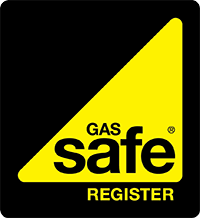How to Install a Wood-Burning Stove into an Existing Fireplace
A fireplace in a home can be a welcome feature but the more traditional-looking fireplace is now gradually being replaced by a wood burning stove that provides a more efficient heat source and something that in some eyes is much more beautiful to look at.
But the question remains, is it easy to install a wood-burning stove into my existing fireplace? Well, put simply it’s relatively easy but we would always recommend you have the help of an expert!
As long as you follow a few steps and have a few things already in order, you should have no problem at all converting your fireplace space into a stove cove.
Things to consider when installing a wood-burning stove in an existing fireplace
As much as you may wish to simply remove the old fire and add a new one, there are a few things you need to consider first. Wood burners can’t just fit into any recess and be deemed safe and suitable.
Before proceeding with any of the steps that allow you to furnish your room with a new stove, look at the size of the room you are looking to heat. This will then allow you to look at suitable wood-burning stoves on the market for that room size. Also factor in the removal of the original fire if it is still there. A gas fireplace for example should only be removed by a Gas Safe registered engineer.
Consider the chimney and flue size of your existing fireplace
Current regulations mean that a wood-burning stove can only be installed if the chimney is categorized as a class one chimney.
In many cases, this will already be the case, especially if you had a solid fuel fire originally. Category 2 or pre-cast flues will not be suitable.
Once you have found that your chimney is suitable for wood burning stoves, look at your flue. The diameter is very important. If you attempt to connect a wood-burning stove to an incorrect size flue you will not only lose efficiency, but you could put your property and yourselves at risk.
Most stoves will require a 6-inch minimum flue diameter but wood burning stove fireplaces experts like Ignition will be able to advise you on what stove is suitable for your home.
If the chimney itself is smaller than the flue diameter your chosen stove requires then you will not be able to install it.
If the chimney is suitable, before going ahead you should also look into having your chimney inspected. A blockage in the chimney could cause a fire once your stove is installed. At the same time as having a chimney cleaning carried out, it may also be worth looking into having your chimney lined. This will help you get a more efficient burn from your stove and prevent leaks of carbon monoxide.
How far will the stove be from combustible materials?
Fire is a dangerous element and can pose a significant risk if not respected. When considering putting a wood-burning stove into an existing fireplace, you will need to ensure that the stove fits without being too close to combustible materials. Each stove will have varying requirements so what may appear safe with one stove may not be with another. This is another aspect of stove installation where you should consult an expert for additional guidance first. If the fireplace is made of non-combustible materials then there are no regulations as to what distance your stove needs to be away from any walls. The only hindrance could be the performance of the stove as there is less room for air and heat to circulate.
Consider the wood burning stove heat output
We mentioned earlier the size of the room and the size of the stove you may need, and this is hugely important. Stoves give out a lot of heat and whilst you may feel the need to fill the space left by your old fire, this is not the best option. You can very quickly make your room feel like a furnace if the stove is too big. Instead, consider a small stove and follow the guidelines as set out by the manufacturer or supplier. This way you may not only save money by purchasing a smaller-than-expected stove but also save yourself from an unbearable temperature in a room meant for enjoyment!
Ensure you have a suitable hearth in place
The hearth that is used for your stove cannot just be any old hearth. Regulations have been put in place to ensure maximum safety and that could mean sourcing an alternative hearth to the one your old fire used.
Current rules mean that if the hearth reaches up to 100C then it must reach at least 300mm out from the front of the stove as well as 150mm at the sides. To help protect the floor, the hearth must also be at least 12mm thick and made from non-combustible materials.
There is every chance that the fireplace you are using is a few years old, this could mean there are cracks in the hearth. If so, it would not be safe to use. The intense heat given out from wood-burning stoves means that cracks can lead to severe issues.
Once these considerations have been taken and you have settled on a suitable stove, you can move on to installing it.
Installing a wood-burning stove in an old fireplace
If you have now found a stove perfect for your needs and the fireplace itself matches the requirements we covered earlier, you can look forward to having your new wood-burning stove installed. With anything that involves combustibles though it would always be recommended that you have the wood-burning stove installed by an expert. Stove fireplace installation can be tricky and an incorrect installation could see you not only injure yourself but put the rest of the household at risk.
Once installed it is a legal requirement to have a carbon monoxide detector fitted, you will need to make sure it is in the same room as the stove and either on the ceiling or the wall. In some instances, an installer will fit this for you to ensure it is in the correct position. Should you do it yourself though, ensure that the horizontal distance between the detector and the wall is between one and three metres.
What is the cost of installing a wood burning stove in an existing fireplace?
The costs for this type of installation will vary. Wood-burning stoves have a variety of price points depending on the brand, the size, the output and more. However, you should also factor in any other costs associated with it. Your chimney, flue, and hearth may all need work done on them and this could see the costs vary from a few hundred pounds to a few thousand. To get a good idea of the total value, a visit to our ignition fires cranleigh showroom will help give you an insight into stove costs as well as a chance to ask our industry experts about the associated costs that other work may add on.
With over 40 years of experience in the world of fires, stoves and surrounds our knowledgeable team can help transform your home with a stunning new feature. Pay us a visit, browse online or simply get in touch to find out more about what we can do. With delivery, installation and servicing all part of our offering, you can rest assured that choosing Ignition results in a premium service all the time. Having furnished homes and businesses across Surrey for years, our reputation is now leading us further afield so discover what Ignition can do for you today and enjoy your new fire tomorrow!




